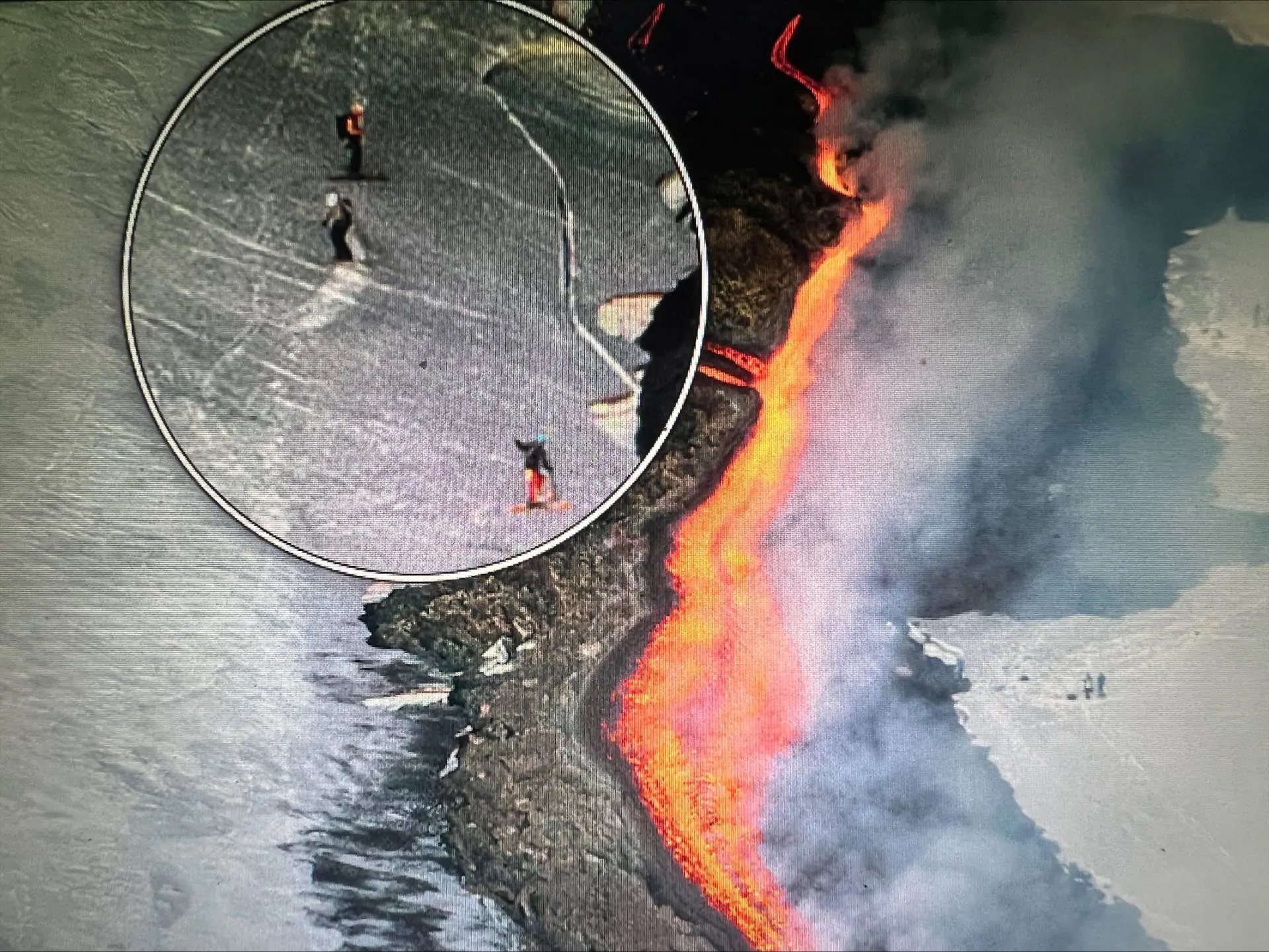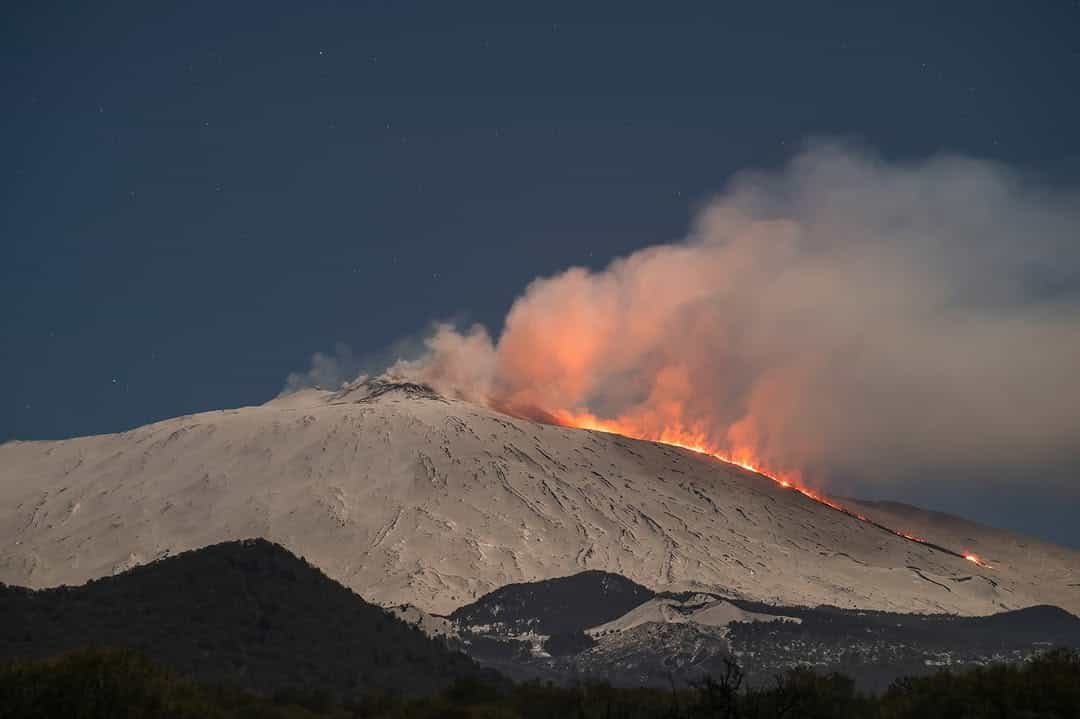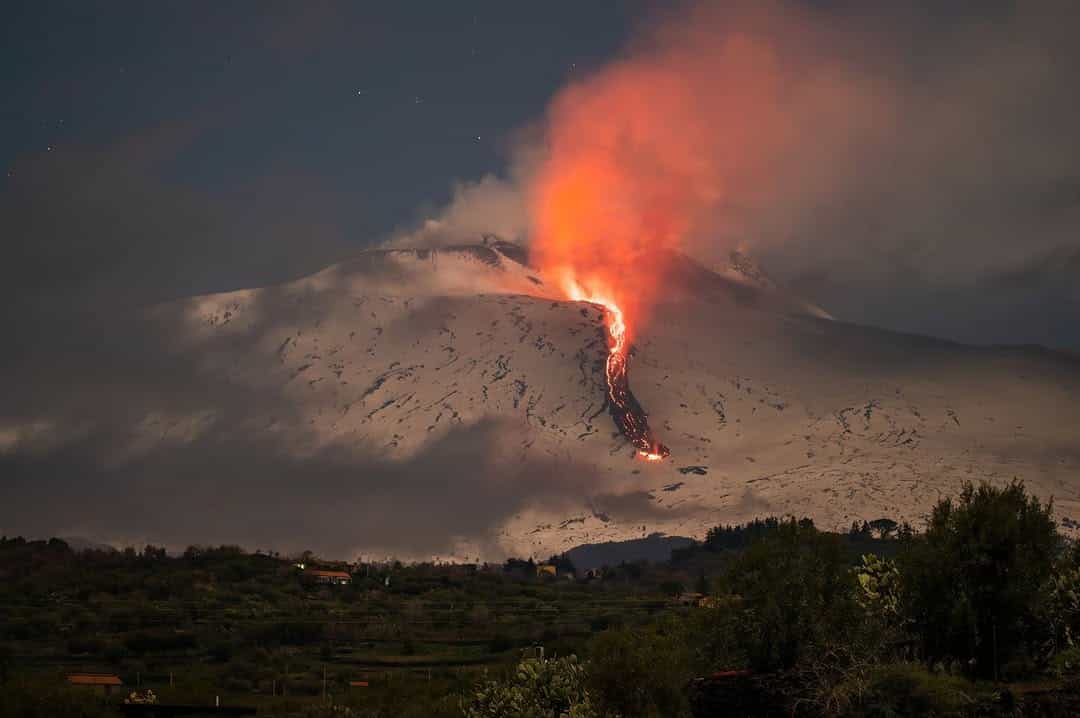

Mount Etna Erupts, Skiers chance a once in a lifetime run
Popular Stories
Mount Etna Erupts, Sending Lava and Ash Over Skiers in Sicily

Photo: Emilio Messina Photography
Mount Etna, the world's most active volcano, erupted on February 12, 2025, illuminating the Sicilian skyline with volcanic hue of lava and ash. The eruption followed a series of seismic tremors measuring up to 3.7 in magnitude detected near the summit. While the eruption is a striking display of nature’s power, Italian authorities report no immediate cause for alarm and continue to monitor the situation closely.
A Volcanic Giant With a Long History
Located on the island of Sicily, Italy, Mount Etna is the most active stratovolcano in the world. Standing at 10,915 feet (3,327 meters), it has defined the Sicilian horizon for hundreds of thousands of years. With a continuous eruptive history spanning at least 500,000 years, Etna remains a focal point for volcanologists and geophysicists worldwide. Historical records document its eruptions for over 2,700 years, making it one of the world’s longest-studied active volcanoes.

Photo: meteoeradar
Ski hill on Fire
Despite its fiery temperament, Mount Etna offers a rare opportunity to ski on an active volcano. The Piano Provenzana-Linguaglossa ski area, located on Etna’s northern slopes, features ski lifts, well-groomed red and blue slopes, ski schools, and rental facilities. During winter, snow transforms the rugged volcanic landscape into a ski destination unlike any other. The chance to track fresh liones between the mountain’s hardened lava flows, offers an experience of the surreal contrast of skiing between snow, fire, and the Mediterranean Sea.
Join Our Newsletter

Photo: meteoeradar
Mount Etna’s Slow Descent Toward the Sea
As Etna continues its cycles of eruption, its structure is also undergoing a more gradual transformation. The volcano is slowly shifting toward the Mediterranean Sea at a rate of a few inches per year. While this movement is natural, it raises questions about the potential for a future collapse. “This movement is important to study as it could lead to a catastrophic collapse of the volcano, which in turn could generate a tsunami,” Dr. Urlaub of the Helmholtz Center for Ocean Research told National Geographic.
The possibility of such an event remains uncertain, as geologists require decades of data to distinguish between normal geological shifts and significant destabilization. While the timeline for a major event is unknown, ongoing research continues to monitor Etna’s movements and their potential implications for the region.
For now, Mount Etna remains an awe-inspiring force of nature, offering the chance to ski amid active lava flows for those who are into that...




